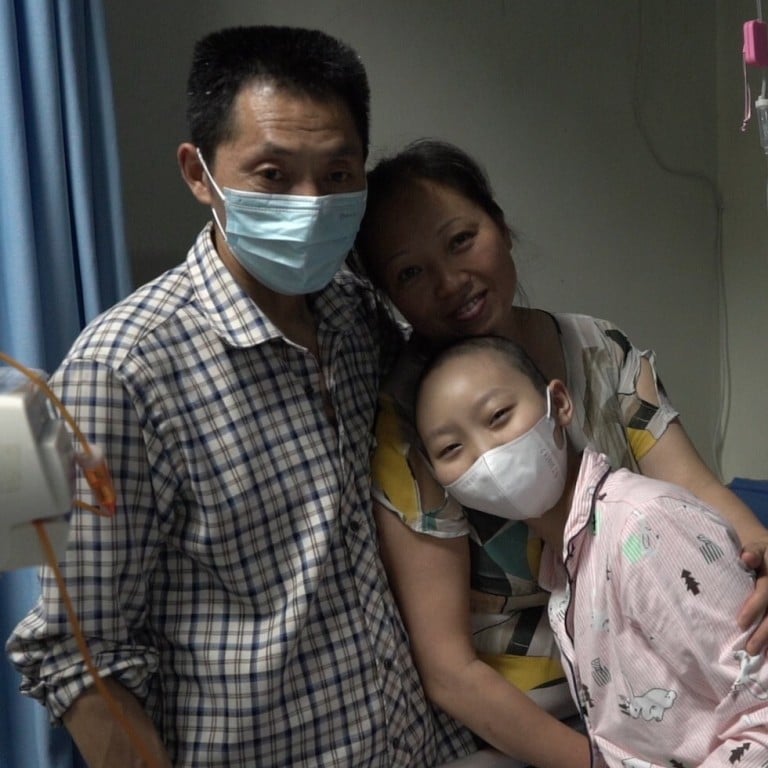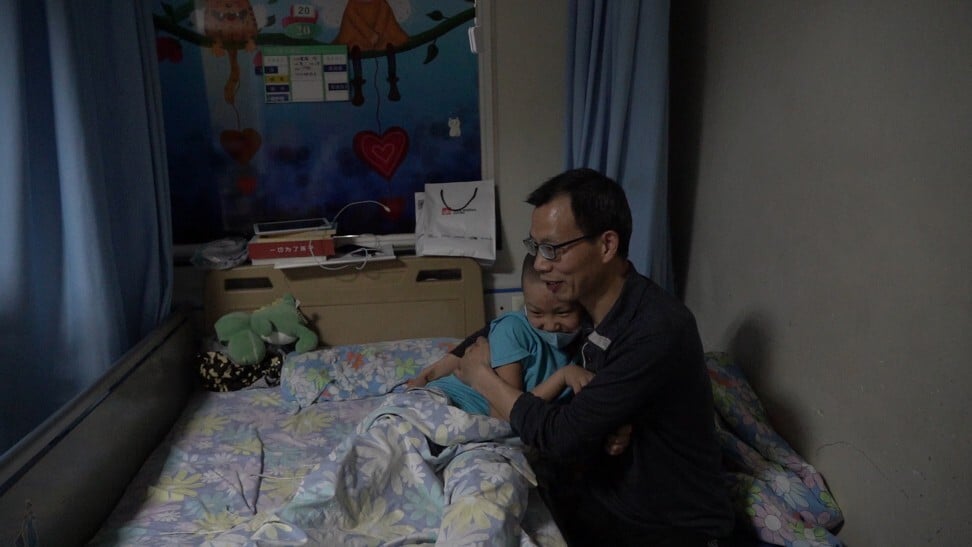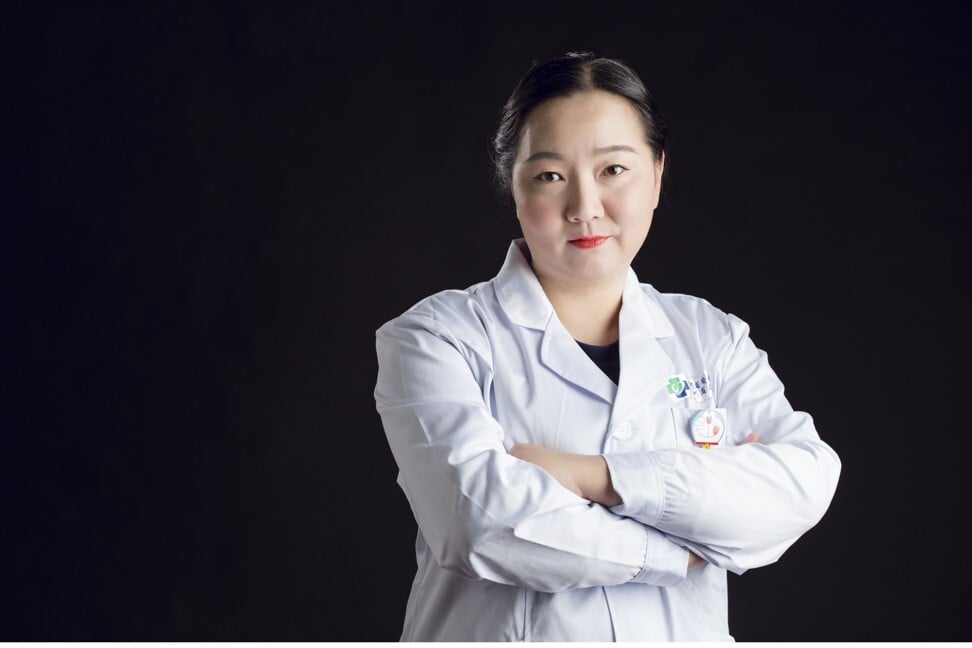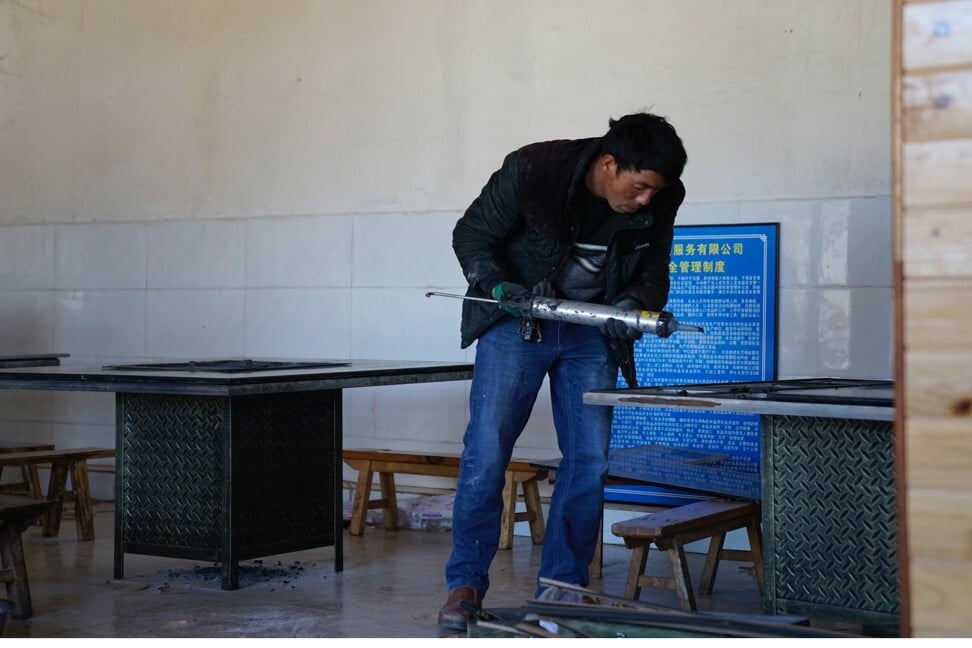
Chemical in home renovations linked to child leukaemia, lymphoma cases in China; more than 70 per cent come from homes recently renovated, doctor says
- Formaldehyde, widely used in building materials and furniture, suspected by doctor as cause of rising admissions of children with blood cancers at top hospital
- Children at the hospital in Sichuan require years of treatment that can leave families deep in debt; only 70 per cent will make a full recovery
There are two to three children to a room in the children’s oncology ward at Sichuan Provincial People’s Hospital in southwest China. The place is scattered with toys and the laughter of the young patients, some of them bald from chemotherapy, can be heard along with the din from a TV.
Forty children are patients in the ward, and of these, 90 per cent are suffering from leukaemia or lymphoma blood cancers, says Zhou Chenyan, deputy director of the hospital’s paediatrics department.
The treatment for both conditions is basically the same, Zhou explains, usually requiring punishing bouts of chemotherapy and sometimes radiotherapy. While a combination of factors is likely to blame for their illness, Zhou is certain she has identified a major cause – home renovations. “More than 70 per cent of my patients from Sichuan come from homes that have recently been renovated,” she says.
Just as smoking is heavily linked to lung cancer, Zhou believes that chemicals used in building and decorating materials are “leading factors for leukaemia” here. More specifically, she points to one chemical commonly used in these home makeovers – formaldehyde.
Formaldehyde is a colourless, odourless chemical used in glues and resins in building materials such as fibreboard. It is widely considered to be a carcinogen and has been linked in studies to various forms of blood cancer.
Laws governing indoor air quality in China limit formaldehyde in homes to 0.1 milligrams per cubic metre, but this is often ignored, and homeowners often return to their homes before the fumes are given time to dissipate.

Back at Sichuan Provincial People’s Hospital, Zhou confirms that many of her young patients’ homes underwent renovations before they fell ill. One of the parents is Liu Wei, a former chef from Sichuan, whose son Xuntao got sick in 2012.
“He was nearly two years old then,” he says. “He kept developing fevers and heavy cold symptoms. I had to quit my job to concentrate on looking after him.” Liu says that since 2012, Xuntao’s treatment has cost his family more than 1 million yuan (US$142,000).
This chemical is used throughout the building trade now. When I was a child, I saw how furniture was assembled: carpenters built furniture simply, with wood and nails, and without the use of such chemicals
Zhou says children diagnosed with leukaemia require an average of two to three years’ treatment that will cost about 300,000 yuan, but for many this is just the beginning. China has a tiered system of health care made up of public and private programmes. Public health insurance covers only a fraction of the costs incurred by serious illness. This means many families struggle to cover the costs of caring for a sick child.
“Many parents also have to quit their jobs after their children fall ill,” Zhou says.
Gao Yukang, 47, was working as a farmer in Sichuan before his daughter was diagnosed with leukaemia in 2017. Four years earlier, Gao’s family spent 500,000 yuan to build a new house in their village, and moved in a week after its completion. Within two years, his daughter Zhaoruoyi began to develop headaches and coughing, and eventually lost her appetite. He also blames the use of formaldehyde for her illness.
Since her diagnosis, the 14-year-old has been in treatment in Sichuan Provincial People’s Hospital.
“The most difficult part is when she stopped eating. I had no idea what she wanted to eat. She just wouldn’t eat anything,” Gao says. “I can’t give up [on her]. I believe medicine can heal her. That’s the only way forward. I believe that my daughter will recover.”

With many of the families coming from poor backgrounds, Zhou, who also serves as director of the hospital’s Charitable Management Office, has helped set up fundraising drives to help cover the exorbitant medical fees.
In conjunction with a group of parents, she has also set up a team of handymen to remove formaldehyde at newly renovated houses in Chengdu. All the handymen involved are fathers of young cancer patients in Sichuan Provincial People’s Hospital.
The team can range from five to 10 men, and they spray a formaldehyde-removing agent onto furniture, walls and other affected areas in the houses to neutralise the chemical. Each father on the current five-man team earns 300 yuan per day for their work, and the project helps raise community awareness of the cancer risk of renovations, Zhou says.
Zhang Su, whose 19-year-old son’s leukaemia returned in 2016, is among the team members. The hospital worker from Sichuan says their house underwent renovations before his son’s relapse, and the workers used formaldehyde.
“This chemical is used throughout the building trade now,” he says. “When I was a child, I saw how furniture was assembled: carpenters built furniture simply, with wood and nails, and without the use of such chemicals.”
I hope the outreach work by the patients’ fathers can raise public awareness of the risks of toxins being used in the home. Parents must take precautions to protect their children
They have removed formaldehyde at dozens of homes throughout Chengdu. “We charge market price for the service, at 60 yuan per square metre. A 100 square metre (1,076 sq ft) home takes around three hours to complete.”
Zhang says a leukaemia diagnosis for a child has the potential to ruin families. “I’ve spent 1.8 million yuan on my son’s treatment in Sichuan and Beijing,” he says. “While I can claim 400,000 yuan back from government medical insurance, the remainder came from our savings and loans.”
Some families are even forced to sell their homes, Zhang adds.
The good news is that with the right treatment, 70 per cent of children suffering from leukaemia will make a full recovery. Liu is hopeful his son will fall into this category: Xuntao has had a bone-marrow transplant and was sent home in October.
In advanced economies such as the United States, however, the success rate is 95 per cent. In China, the rate of relapse and death from various complications is 30 per cent, Zhou says. “The condition is considered cured if the patient does not relapse within five years after stopping medication,” she adds.

Despite the financial pressure on families, an increasing number of cases are being brought for treatment to Sichuan Provincial People’s Hospital thanks to an overall improvement in economic conditions.
“The rise is related to rapid economic development in the country,” Zhou says. “People now seek treatment at provincial-level hospitals. In the past, they took their children to local hospitals that are not equipped to deal with these cases.”
In total, Sichuan Provincial People’s Hospital is currently treating about 200 leukaemia or lymphoma cancer cases. At its peak intake in 2017, the hospital was admitting 13 new cancer cases in a single day, so there is hope that the dangers of chemicals used in building and decorating materials – particularly formaldehyde – are being recognised.
“I hope the outreach work by the patients’ fathers can raise public awareness of the risks of toxins being used in the home,” Zhou says. “Parents must take precautions to protect their children.”

